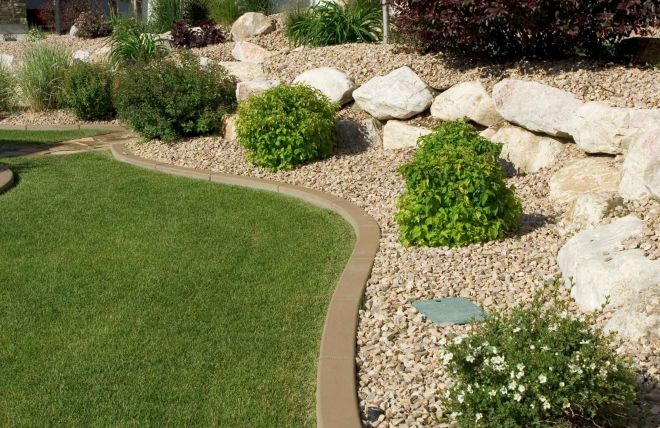When homeowners pay dues to their Homeowners Association (HOA), they expect well-maintained common areas that enhance their community’s value and appeal. Spaces like parks, pools, clubhouses, and sidewalks aren’t just amenities; they are central to fostering neighborhood pride and livability. But what happens when your HOA neglects these responsibilities? Let’s dive into why common area maintenance matters, how to recognize signs of neglect, and what you can do if your HOA isn’t fulfilling its obligations.
Why HOA Common Area Maintenance Matters
HOAs are responsible for managing shared spaces in the neighborhood, ensuring they remain functional, attractive, and safe. Common areas provide a sense of community, offering places where neighbors can connect, children can play, and residents can relax. Additionally, these spaces directly impact property values. A neighborhood with clean, well-maintained common areas attracts buyers and supports strong home values, while neglected spaces can have the opposite effect.
Maintenance of these areas often includes landscaping, cleaning, lighting, and upkeep of recreational facilities. When HOAs fail to manage these responsibilities, it can lead to several problems, including:
- Decreased curb appeal for the entire neighborhood.
- Safety hazards from broken equipment, unlit pathways, or overgrown vegetation.
- Frustration among residents who feel their dues are being mismanaged.
To learn more about the importance of clear HOA rules and their enforcement, read our guide on HOA policies. A well-defined set of responsibilities can help clarify what your HOA should be maintaining and ensure accountability.
Recognizing Signs of Common Area Neglect
Neglected common areas can be easy to spot. You may notice things like:
- Overgrown or poorly maintained landscaping, such as untrimmed bushes, weeds, or dying plants.
- Broken infrastructure, such as cracked sidewalks, damaged fences, or deteriorating playground equipment.
- Recreational facilities like pools or clubhouses being closed for extended periods without explanation or repair.
- Trash and debris accumulating in shared spaces.
- Insufficient lighting in areas like parking lots or pathways, creating safety concerns.
These issues affect the entire community, especially if they persist for long periods. If you notice these problems, document them by taking photos or videos and noting the dates when you observed them. This evidence will be helpful when submitting a formal complaint to your HOA.
For guidance on navigating enforcement issues, check out our article on what happens when HOA rules are not enforced.
What to Do If Your HOA Isn’t Maintaining Common Areas
If you believe your HOA is neglecting its responsibilities, there are steps you can take to address the issue. Here’s a step-by-step guide:
1. Review Your HOA’s Policies and CC&Rs
Start by reviewing your HOA’s governing documents to confirm their responsibilities for common area maintenance. The CC&Rs often specify what areas the HOA must maintain and the standards they must meet. If you find that the HOA is failing to meet these obligations, you have a solid foundation for addressing the issue.
2. Check the HOA Website
Your HOA’s website may provide updates on maintenance schedules or avenues for submitting complaints. A well-maintained website is essential for keeping residents informed and ensuring the board’s accountability. If your HOA lacks a modern website, this could be a sign of broader inefficiencies. To learn why every HOA should prioritize having an updated website, read our article on the importance of an HOA website.
3. Submit a Formal Complaint
If you have verified that the HOA is neglecting its responsibilities, submit a formal complaint. Many HOAs allow residents to submit complaints through their website, which helps document your concerns and ensures they are addressed formally. Be specific in your complaint, citing the issues you’ve observed and providing evidence like photos or videos. Make sure to follow up on the status of your complaint if you don’t receive a timely response.
4. Communicate with the Board
Attend HOA meetings to voice your concerns directly to the board. Present your evidence and explain how the neglect is affecting the community. If other residents share your concerns, encourage them to attend as well, as collective voices are often more impactful.
5. Escalate the Issue
If the board is unresponsive or refuses to take action, consider escalating the matter. This could involve reaching out to the property management company that works with your HOA or consulting with an attorney who specializes in HOA law. In some cases, legal action may be necessary to compel the HOA to fulfill its responsibilities.
The Role of an HOA Website in Maintenance Transparency
A modern, well-maintained HOA website can significantly improve communication between the board and residents. HOAs can use their website to post updates about maintenance schedules, share financial reports, and provide a platform for residents to submit complaints or track their status. Without this digital infrastructure, communication gaps can lead to frustration and unresolved issues.
To see how a functional website can transform your HOA’s transparency and efficiency, visit our post on the value of an HOA website.
Why Enforcement of Common Area Rules is Essential
Failure to maintain common areas is often tied to a larger issue of poor rule enforcement. When HOAs don’t consistently enforce rules, it can lead to frustration among residents and a decline in the neighborhood’s overall appeal. For example:
- Residents may feel it’s unfair that they are expected to follow certain rules while the HOA fails to meet its own obligations.
- Neglecting common areas can create tensions between neighbors, especially when shared spaces are no longer functional or enjoyable.
- Future compliance with rules becomes harder to enforce, as residents lose trust in the board’s leadership.
Clear and consistent enforcement of rules, including those related to common area maintenance, is essential for a thriving community. Boards must prioritize transparency, accountability, and communication to rebuild trust and ensure compliance.
Taking Action to Improve Your Community
If your HOA is neglecting common area maintenance, don’t wait for the issue to resolve itself. Taking proactive steps can make a big difference in holding your HOA accountable and improving the neighborhood for everyone. Here’s what you can do:
- Start by understanding your HOA’s obligations and reviewing their governing documents.
- Use the HOA website to check for updates or submit complaints. If the website isn’t effective, advocate for an upgraded platform that benefits both the board and residents.
- Attend board meetings to voice your concerns and encourage other residents to do the same.
- Document issues and follow up on complaints to ensure they are addressed.
By staying informed and involved, you can help ensure your HOA fulfills its responsibilities and keeps your community a place you’re proud to call home. For additional resources on navigating HOA policies and dealing with enforcement issues, explore these helpful articles:







